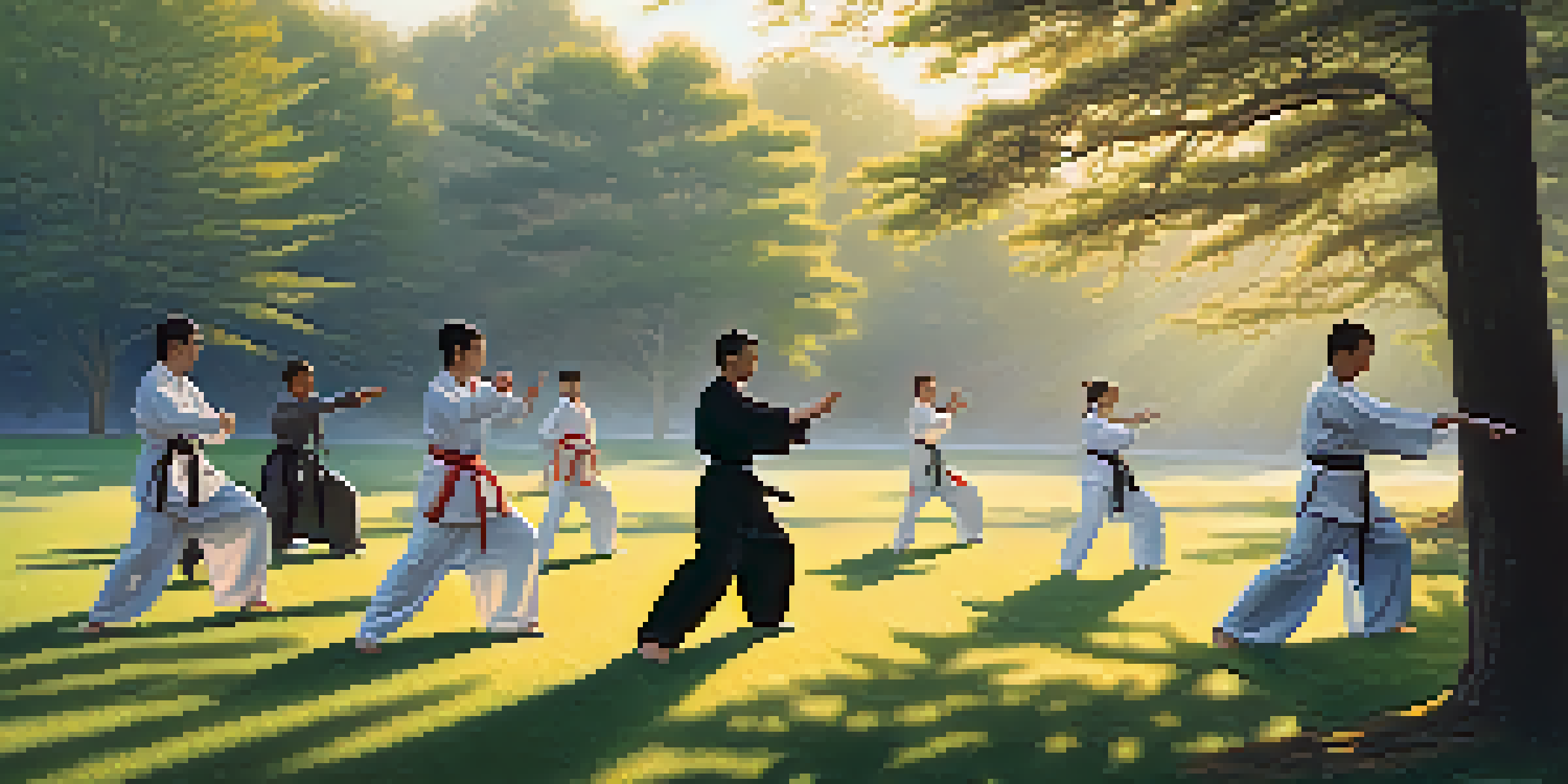Creating a Balance: Indoor vs. Outdoor Martial Arts Training

Understanding the Basics of Martial Arts Training
Martial arts training encompasses various disciplines like karate, judo, and taekwondo, each with its unique techniques. Both indoor and outdoor training offer distinct benefits and challenges that can affect a practitioner’s journey. Understanding these differences is crucial for anyone looking to enhance their skills or simply find a suitable training environment.
The Benefits of Indoor Martial Arts Training
Indoor training provides a controlled environment, which is essential for mastering techniques without distractions. Facilities are typically equipped with mats, bags, and other training gear, creating an optimal space for practice. Moreover, indoor settings offer protection from unpredictable weather, allowing for consistent training schedules.
Indoor Training: Consistency & Control
Indoor martial arts training provides a controlled environment, essential for mastering techniques without distractions and ensuring consistent practice.
The Advantages of Outdoor Martial Arts Training
Outdoor martial arts training brings practitioners closer to nature, which can enhance focus and mental clarity. The varying terrains and natural elements provide unique challenges that can improve agility and adaptability. Additionally, training outdoors often fosters a sense of community, as classes can be larger and more social.
Challenges of Indoor Training: Space and Equipment
While indoor training offers a controlled environment, it can also be limited by available space and equipment. In smaller studios, practitioners might find it challenging to practice certain movements or techniques freely. Furthermore, reliance on specific equipment can hinder creativity and adaptability during training.
Outdoor Training: Nature's Challenge
Outdoor training enhances focus and agility by incorporating natural elements, while also fostering a sense of community among practitioners.
Challenges of Outdoor Training: Weather and Safety
Outdoor training can be affected by unpredictable weather conditions, which may lead to cancellations or uncomfortable training experiences. Safety is another concern, as uneven surfaces or obstacles can increase the risk of injury. Practitioners must also be mindful of their surroundings to avoid distractions or potential hazards.
Choosing the Right Environment for Your Goals
Deciding between indoor and outdoor training often depends on individual goals and preferences. If mastering precise techniques is your priority, an indoor setting may be more beneficial. Conversely, if you seek to blend physical training with a refreshing outdoor experience, outdoor sessions could be the perfect fit.
Balance: Indoor and Outdoor Benefits
Combining indoor and outdoor training creates a well-rounded experience, allowing practitioners to improve their skills while enjoying diverse environments.
Combining Indoor and Outdoor Training for Balance
Finding a balance between indoor and outdoor training can offer the best of both worlds. Practitioners can focus on technique indoors while enjoying the freedom and adaptability of outdoor sessions. This combination not only keeps training fresh and exciting but also enhances overall skills and fitness.
Final Thoughts: Embrace Your Martial Arts Journey
Ultimately, whether you choose indoor or outdoor martial arts training, the key is to embrace your journey. Each environment offers unique experiences that can enhance your skills and personal growth. By exploring both options, you can discover what resonates with you, ensuring a fulfilling martial arts practice.